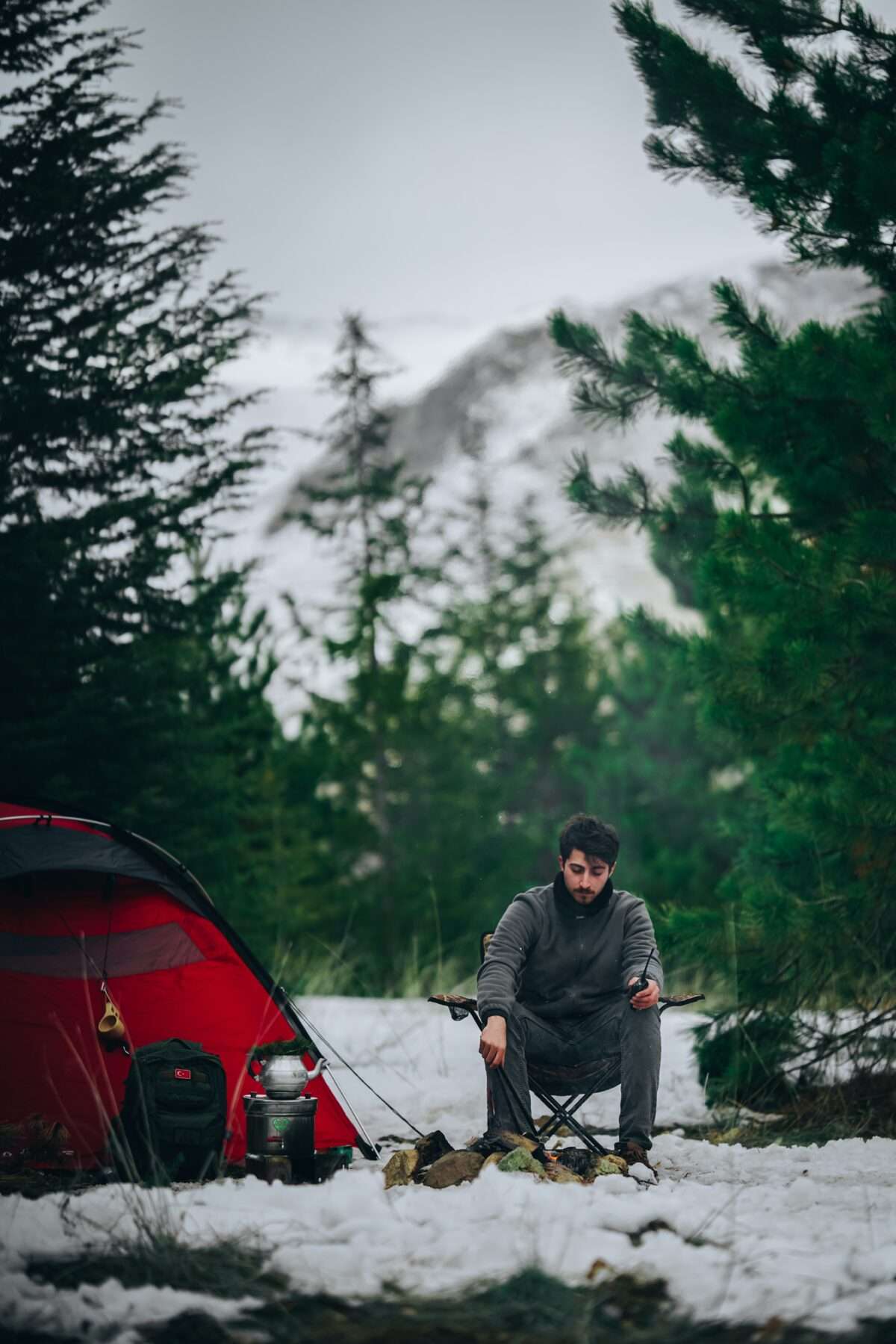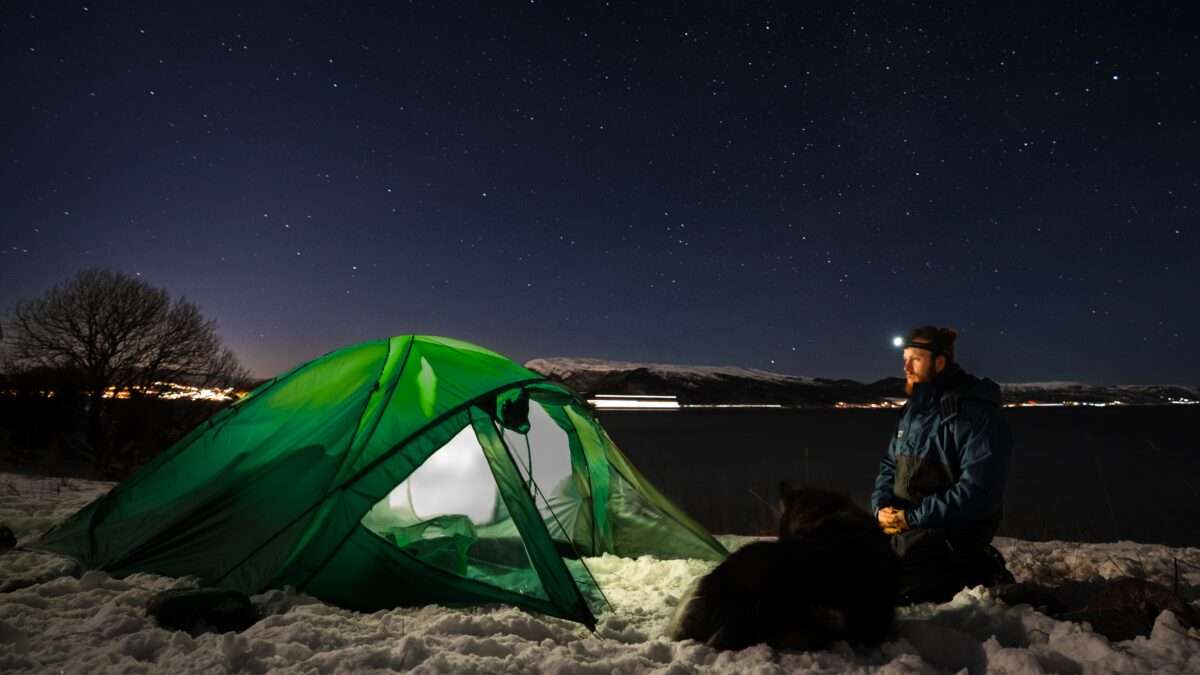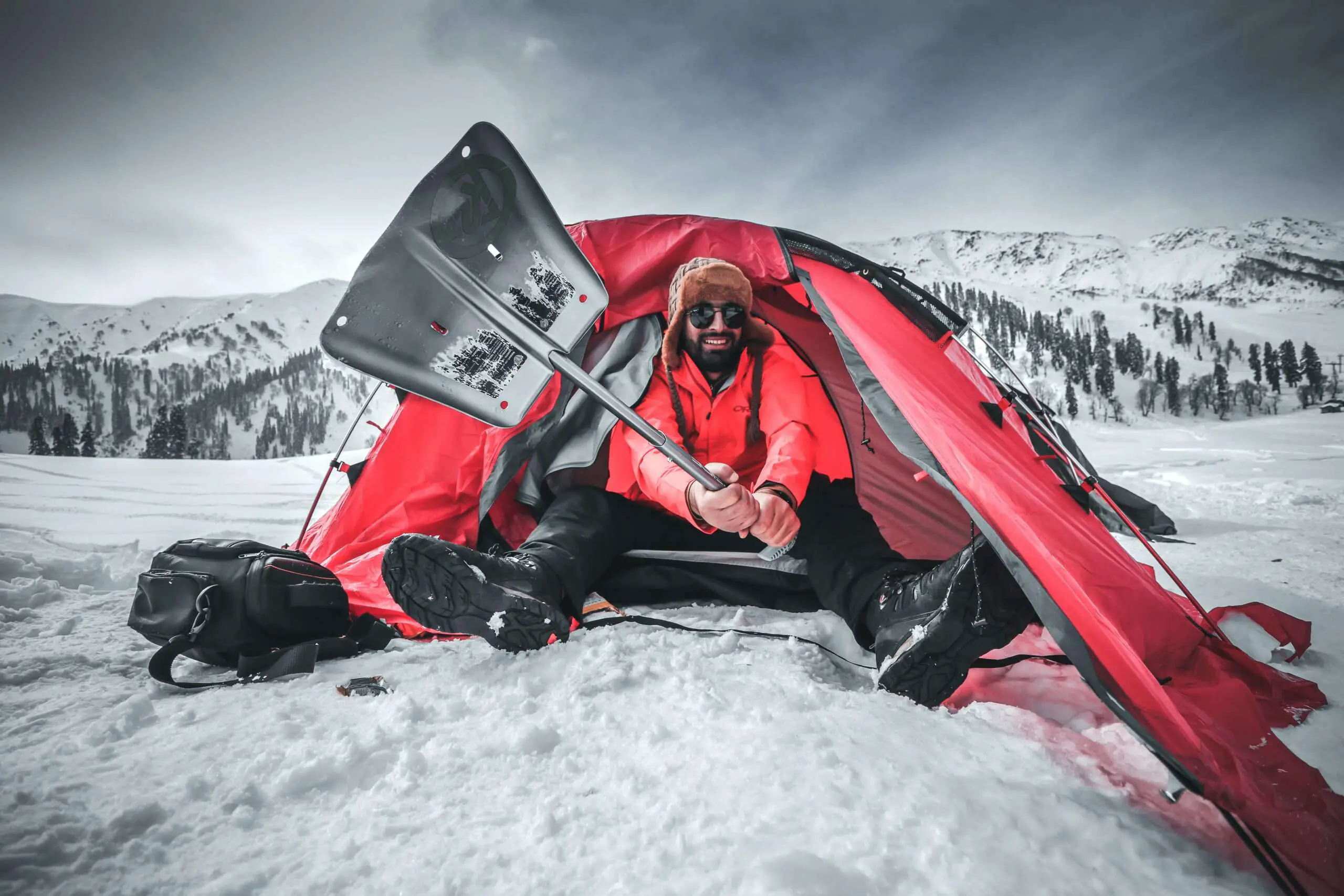As the winter wind howls and snowflakes fall, many adventurers find the allure of winter camping irresistible. However, maintaining a cozy and comfortable climate inside your tent calls for more than just piling on layers of clothing. Camping in winter, unlike the more forgiving summer months, requires specialized gear and advanced planning to ensure safety and comfort. This guide features eight effective techniques on how to insulate your tent during those icy winter expeditions.
1. Choosing a 4-season tent
The first step in staying warm while winter camping is choosing a sturdy 4-season tent. These tents are specifically designed to withstand cold temperatures and harsh weather conditions. A 4-season tent offers sturdier poles, more robust guylines, and weather-resistant materials that keep wind, snow, and cold air out. This essential gear investment will make a significant difference in your overall comfort level when camping in extreme conditions.
4-season tents are specifically built to endure harsh conditions. Constructed with thicker fabric and with fewer mesh panels, they have excellent insulation properties. The zippers are usually heavy-duty to prevent breaking in cold climates. The poles and stakes are also stronger to withstand heavier snowfall or high winds.

2. Advantages of a smaller tent
When it comes to winter camping, opting for a smaller tent can actually help insulate your sleeping space. Smaller spaces are easier to heat since there’s less area for the cold air to circulate. Plus, your body heat will be more concentrated, raising the overall temperature in the tent. Opt for a small tent that offers just enough room for you, your sleeping gear, and any essential belongings. The compact design of a smaller tent offers several practical benefits
- Heat Retention: As the area is compact, the body heat emanating from campers is better confined within the walls of the tent, making it substantially warmer. This is particularly advantageous in winter conditions, where externally sourced heating may not be available.
- Simplicity: Smaller tents are typically simpler to set up and disassemble. They’re a fantastic option for solo explorers or for those who prefer less effort in building their camping shelter.
- Portability: The size of your tent can have a big impact on transport and mobility. Smaller tents tend to be lighter and take up less space when packed, making them more portable for hiking or backpacking adventures.
- Blending in: If you’re camping in a public or semi-public place, a smaller tent is less noticeable and more likely to blend into the environment. This can be advantageous for campers seeking a more tranquil, undisturbed experience.
- Savings: Generally, smaller tents are less costly than larger ones. If you’re camping solo or as a couple, opting for a smaller tent can save a significant amount of money.
3. Using a Tarp to Ward Off Wind
When using a tarp, it’s essential that it’s properly secured. This can be achieved through the use of sturdy cords and securing the edges with rocks or pegs. If possible, it’s good to have a slight slope to allow the snow or rain to slide off. This prevents excessive weight from accumulating in the shelter, which could lead to it collapsing.
Adding another layer of protection against wind, snow, and rain can help insulate your tent. Hang a tarp over your tent, pitching it in a way that allows air to circulate (preventing condensation), yet shelters the tent from wind gusts. By doing so, you’ll create an extra shield against the elements.

4. Building a Snow Windbreak
An effective way to keep your tent warm and block the wind is by building a snow windbreak. Pile and pack snow around your tent in a half-moon shape facing the prevailing wind. This simple and natural ice wall will help absorb the wind’s force, creating a calmer and warmer environment inside your tent.
5. Utility of a Thermal Blanket
Thermal blankets, also known as space blankets, are lightweight but highly effective when it comes to heat retention. Drape a thermal blanket on top of your tent, ensuring it doesn’t affect your tent’s ventilation. This will not only help reflect body heat back into your tent but also add another layer of protection against snow accumulation.
6. Insulating tent’s Walls and Roof with Fabric
Line the interior walls and roof of your tent with an insulating fabric or specialized tent insulation. This added interior layer will help keep your body heat inside, providing a barrier against the cold air outside. Look for insulation materials designed for tents, like reflective insulations, to ensure maximum efficiency without hindering ventilation.
How to insulate a tent for winter camping with a radiant barrier or reflective foil.
A radiant barrier or reflective foil is often used to line the interior of a tent. It helps to reflect heat back to the source, which in the case of a tent, is the occupier’s body heat. This is a beneficial step in conserving as much warmth as possible.

7. Need for a Tent Footprint
A tent footprint serves as a protective barrier between the tent floor and rough or damp ground. This supplementary layer safeguards your tent from sharp rocks, sticks, and other hazards that can damage or puncture the tent floor. Beyond ensuring a longer lifespan for your camping shelter, a footprint adds an essential insulating layer, creating a barrier against cold and dampness from seeping up from the ground.
Furthermore, using a tent footprint can enhance the overall camping experience by maintaining a clean and dry interior environment. As it prevents moisture from entering the tent from underneath, occupants can sleep comfortably without being exposed to damp conditions. In summary, tent footprints are invaluable accessories that play a significant role in prolonging tent durability and improving the insulating properties crucial to a comfortable camping adventure
8. Foam Padding Benefits for Floor Insulation
To further insulate your tent, add a layer of foam padding to the floor. This extra buffer will help keep your body heat from being absorbed by the cold ground, keeping you warmer throughout the night. Good options for foam padding include closed-cell foam sleeping pads or interlocking foam floor tiles designed for camping.
Closed-cell foam is a popular choice for floor insulation due to its impressive insulation properties and its durability. It’s water-resistant, meaning it prevents dampness from the ground from seeping into the sleeping area. Plus, some options are designed to fold or roll up, making them fairly compact to carry.
Winter is the perfect time to experience hot tent camping. How to Insulate a Tent for Winter Camping: Tips for creating warm, lasting memories. By insulating your tent with a 4-season tent, using a smaller tent, employing tarps, snow barriers, thermal blankets, insulating fabric, tent footprints, and foam padding, you can transform your frosty winter camping experience into a cozy and memorable adventure. So gear up, brave the cold, and experience the beauty of winter in a whole new light!

Leave a Reply
You must be logged in to post a comment.